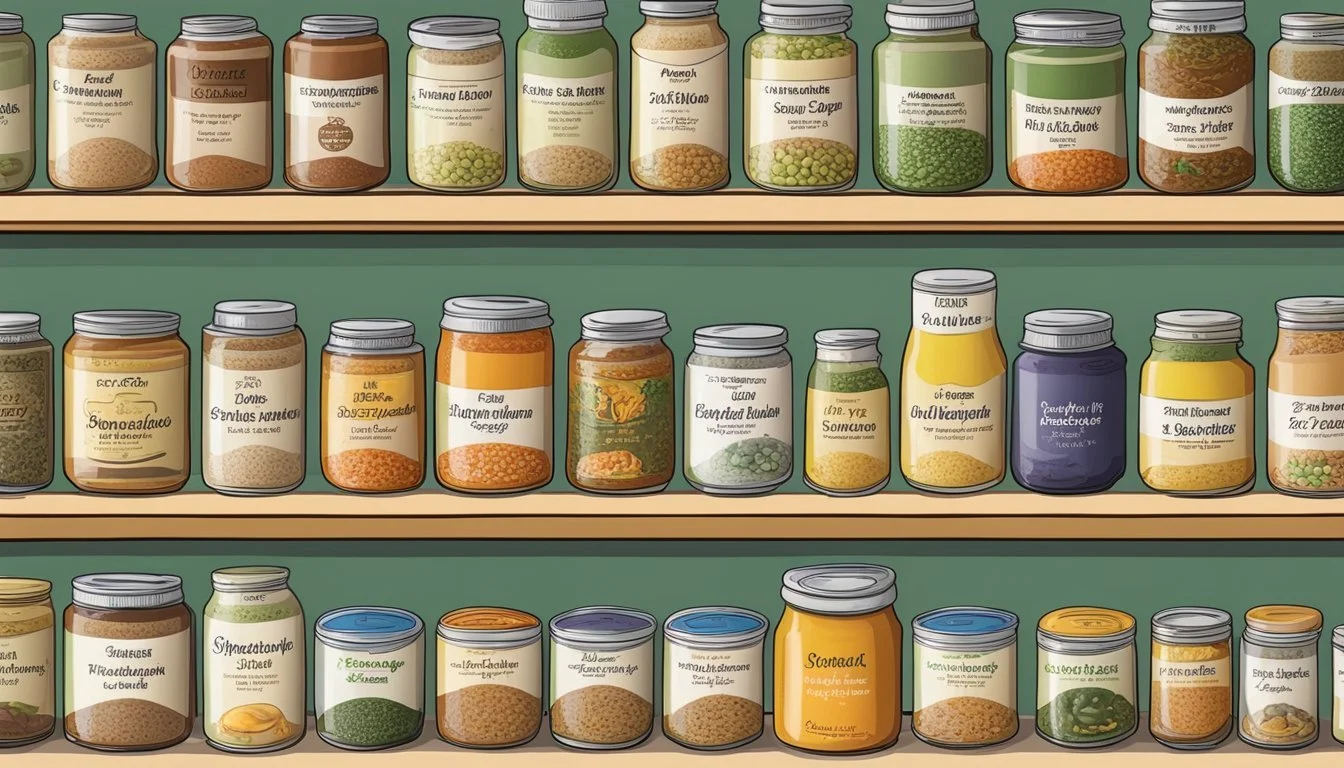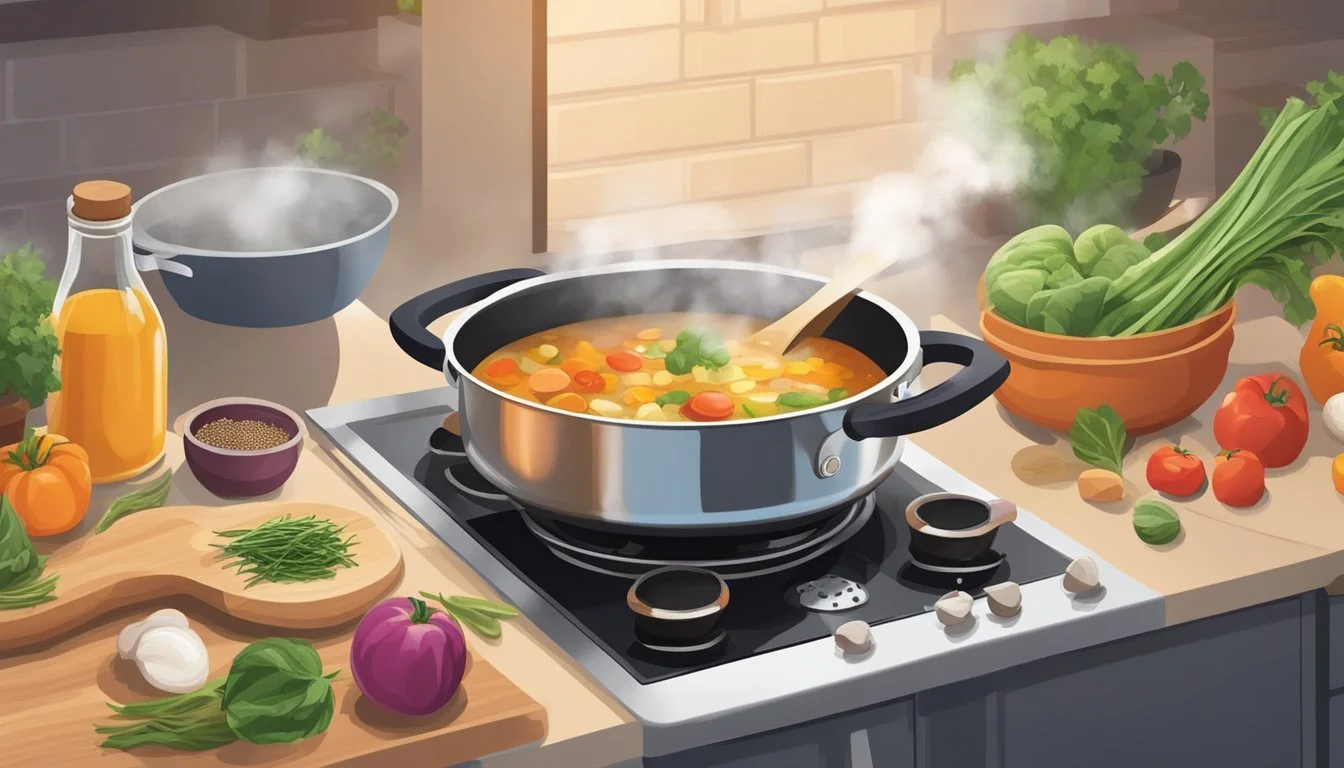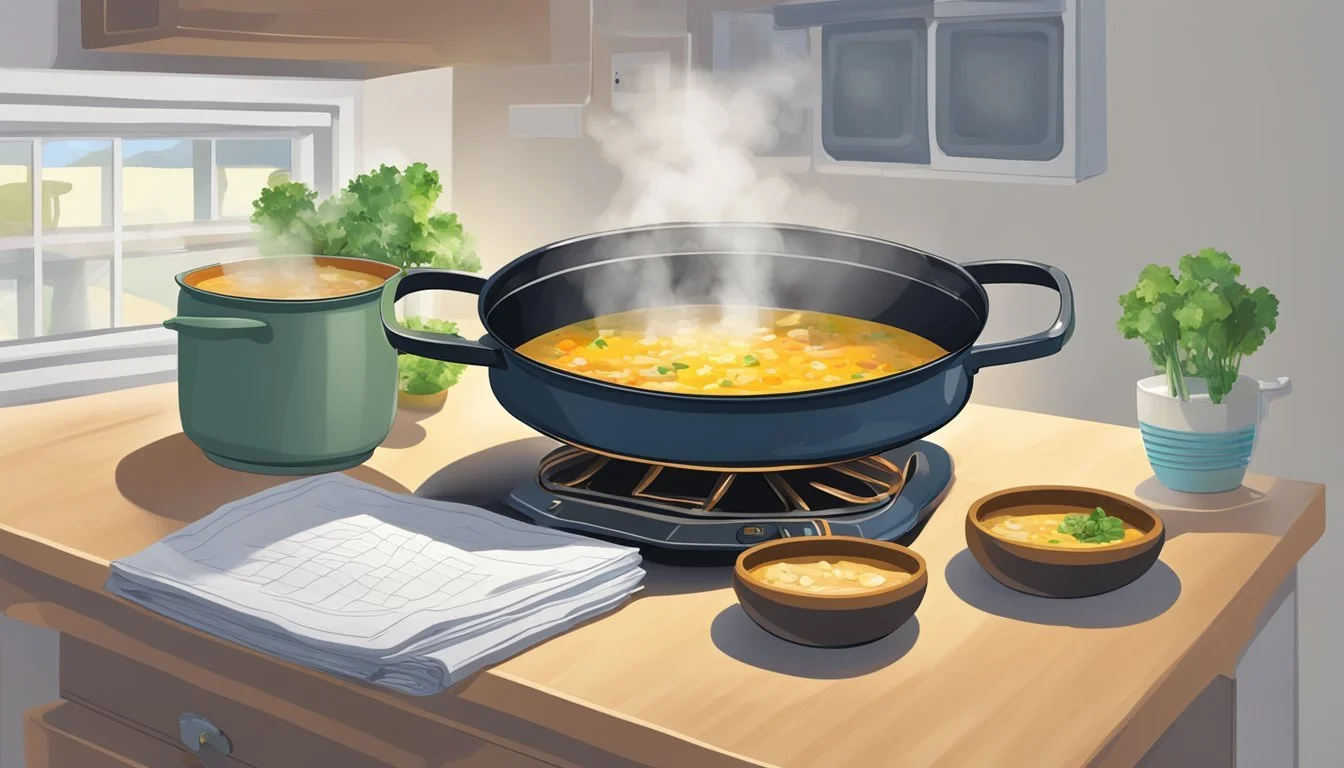How Long Do Soups Last?
Shelf Life and Storage Tips
The longevity of soup is a topic of great practical importance, especially during the colder months when it stands as a staple for comfort and warmth. Preserving the freshness and safety of this nourishing dish is essential. Soups (What wine goes well with soups?), with their vast array of ingredients and methods of preparation, can have variable shelf lives. Their duration of freshness is influenced by factors like the type of ingredients used, the presence of preservatives, and the method of storage.
Refrigeration plays a crucial role in extending the edibility of soup. Typically, a properly stored homemade soup is considered safe to eat for three to five days when kept in the refrigerator. Clear, vegetable-based soups may last towards the longer end of this spectrum, particularly when they contain acidic elements such as tomatoes. On the other hand, creamy soups or those with meat are often best consumed within a shorter timeframe to ensure both safety and quality.
Understanding Soup Shelf Life
Evaluating the longevity of soup is vital for both safety and quality. The shelf life of soup is influenced by a variety of factors, including the ingredients used and storage conditions.
Factors Affecting Shelf Life
Components: The lifespan of soup is greatly impacted by its ingredients. Meats and dairy products shorten the shelf life due to their propensity to spoil faster than vegetables. Soups with high acidity levels, like those containing tomatoes, may have a slightly longer shelf life, as acidic environments can inhibit bacterial growth.
Storage Conditions: Temperature is critical. Soups should be stored in the fridge at or below 40°F (4°C) or in the freezer at 0°F (-18°C). Room temperature storage should be avoided as it can lead to rapid bacterial growth.
Typical Shelf Life by Soup Type
Vegetable Soup: Refrigerator: up to 5 days | Freezer: 4-6 months
Chicken Soup: Refrigerator: 3-4 days | Freezer: 4-6 months
Seafood Soup: Refrigerator: 2-3 days | Freezer: 2-3 months
Cream-based Soups: Refrigerator: 3-4 days | Freezer: Not recommended due to potential separation of dairy components upon thawing.
Soups made with broths or stocks may last toward the longer end of these ranges due to their simplicity and lack of spoilage-prone ingredients like cream or seafood. It's essential to cool soups completely before sealing and freezing, and to store them in portion-sized containers for easy thawing.
Safe Soup Storage Practices
Proper storage techniques are crucial for maintaining the safety and quality of soup. By following these practices, individuals can extend the life of their soups while ensuring they are stored in a safe manner.
Refrigerator Storage
Temperature Matters: Soups should be stored in the refrigerator at a consistent temperature of 40°F or below. This helps slow bacterial growth and keeps the soup safe for consumption.
Container Choice: Transfer soups into airtight containers to help preserve their freshness. Airtight seals prevent external bacteria from entering and keep smells inside, thereby minimizing cross-contamination.
Cooling Before Storing: To expedite cooling and help soups reach a safe refrigerated temperature more quickly, they can be poured into shallow containers. This method speeds up the cooling process.
Label with Date:
Contents Date Cooked Use By Date Chicken Soup 03/12/2024 03/17/2024 Vegetable Soup 03/12/2024 03/15/2024
Chart the type of soup, the date it was made, and the anticipated use by date for easy reference and to ensure soups are consumed when at their best quality.
Freezer Storage
Suitability for Freezing: Not all soups are meant to be frozen. Creamy soups or those with dairy may separate and lose texture upon thawing. However, broth-based and vegetable soups are typically well-suited for freezing.
Pre-Freeze Preparation: Soups should be cooled to refrigerator temperature before transferring to the freezer.
Proper Containers: Use freezer-safe containers or bags that are airtight to prevent freezer burn. Leaving some space at the top of the container allows for expansion when the soup freezes.
Labelling is Crucial:
Contents Date Frozen Use By Date Lentil Soup 03/12/2024 09/12/2024 Tomato Soup 03/12/2024 09/12/2024
Labels should clearly display the type of soup, the date of freezing, and an appropriate use by date which is typically within six months for optimal taste.
Avoiding Contamination
Limit Exposure: Soups should be transferred to storage containers within two hours of cooking to limit bacterial exposure.
Divided Quantities: Large quantities of soup can be divided into smaller portions to help them cool more rapidly.
Regular Inventory Checks: Maintain a routine of checking stored soups for signs of spoilage and adhere to the first in, first out principle to use older soups first, thus minimizing the risk of consuming potentially unsafe food.
Maximizing Soup Flavor and Quality
To preserve the taste and safety of soup, following correct cooling and reheating procedures is essential. These practices ensure that the soup’s flavor is maintained from the moment it is stored to the moment it is served.
Proper Cooling Techniques
When dealing with leftover homemade soup, it's crucial to allow it to cool to room temperature before refrigeration. Cooling should be done within two hours to prevent bacteria growth. Freezer bags or airtight containers are recommended for storage to maintain flavor and prevent contamination. For soups containing dairy, like milk, butter, flour, or cream, swift cooling is even more important to keep these ingredients from spoiling.
Reheating for Best Taste
To reheat soup, the method can affect the end result. For even heating, a stove is preferred. Reheat the soup in a covered pot over medium heat, stirring frequently. Using a microwave can also work efficiently when one stirs the soup halfway through the heating process. Soups with cream or milk should be heated slowly to avoid curdling. It is not recommended to reheat the soup multiple times as this can degrade the flavor.
Handling Leftovers and Surplus
When dealing with leftover soup, safety and quality are paramount. One must ensure that soup is stored properly to prevent spoilage and bacteria growth, and also understand the process of freezing and reheating to maintain the soup's integrity.
Freezing Soup Guidelines
To preserve leftover soup effectively, one should cool it to below 40°F before freezing. Use airtight containers or freezer bags, leaving enough headspace for expansion. Clearly label each container with the content and date of freezing. Most soups can be frozen for 2-3 months while retaining quality. Avoid freezing soups that contain cream or potatoes, as they may separate or become grainy.
Thawing and Defrosting
Thawing should be done in the refrigerator to ensure the soup's temperature rises gradually and stays out of the "danger zone" (40°F - 140°F), which promotes bacterial growth. Alternate methods include defrosting in a water bath or using the microwave, but these require immediate reheating and consumption. Never thaw soup at room temperature.
Discarding Old Soup
Regularly check refrigerated soup for signs of spoilage, such as mold, sour smell, or cloudiness. If any doubt arises about the quality of the soup, it's advisable to discard it to prevent foodborne illness. Generally, refrigerated soups should not be consumed if they have been stored for more than three to four days. Discard frozen soups that have been stored for longer than three months or display freezer burn.
Special Considerations for Soup Varieties
The shelf life of soups can significantly vary depending on their ingredients and base. This section details the storage longevity of dairy and cream-based soups, clear soups and broths, and soups with solid ingredients, considering factors like acidity and the presence of perishable components.
Dairy and Cream-Based Soups
Dairy and Cream-Based Soups, such as bisque or chowder, have a shorter lifespan in the refrigerator due to the dairy content. The high protein in milk and cream can become a breeding ground for bacteria if not stored correctly. Typically, these soups should be consumed within 2-3 days.
Creamy soups can spoil faster than other types.
Ingredients like noodles or rice may become mushy over time.
Clear Soups and Broths
Clear Soups and Broths are generally more resilient. With bases such as vegetable or chicken broth and simple additions like onions, potatoes, or veggies, these soups can last in the refrigerator for about 3-4 days. Vegetable-based soups with acidic components, such as tomatoes, might have a slightly longer shelf life.
Optimal for storage when ingredients are not prone to soaking up excess liquid.
Bouillon-based broths store well, especially if they don't contain perishable meats or seafood.
Soups with Solid Ingredients
Soups that contain significant amounts of meat, fish, or grains require careful attention, as these items can harbor bacteria when stored. They're safe for consumption within 3-5 days, and:
Storing meat-based soups past the 3-day mark is not advisable.
Soups with seafood should be eaten at the earliest opportunity, ideally within 2 days.
Soup Preparation and Cooking Tips
When making homemade soup, the quality of the ingredients and the cooking techniques used are pivotal for both the flavor and safety of the dish. These tips aim to guide cooks in creating soups that are both delicious and safe to enjoy.
Selecting Quality Ingredients
Freshness is key. The chef should source the highest quality veggies and proteins. Organic produce and grass-fed meats not only boost flavor but also contribute to a healthier soup. For example, using fresh mushrooms and lentils in a soup enhances its earthy flavors, while fresh spices can be used to fine-tune the taste profile.
Broth matters. Creating a soup's base with homemade stock or broth adds a depth of flavor that can't be matched by store-bought versions. When preparing stock, they should simmer bones or vegetables for an extended period to extract flavors fully, ensuring a robust foundation for the soup.
Soup Cooking Techniques
Safety first. When cooking soup, chefs must ensure that it reaches a temperature high enough to eliminate harmful bacteria. This typically means bringing the soup to a boil for at least three minutes, especially if reheating.
Perfecting the simmer. Soup benefits from cooking low and slow on the stovetop, allowing flavors to meld together. A gentle simmer, rather than a rolling boil, can prevent delicate ingredients from breaking apart while maximizing flavor extraction from ingredients like spices and herbs.
Efficiency in the kitchen. To make the cooking process more efficient, they can prepare ingredients in advance by chopping vegetables or measuring spices before starting the soup. This mise en place approach ensures a smooth cooking experience and helps to avoid overcooking ingredients throughout the process.
Soup Storage FAQs
Proper storage of soup can maximize its shelf life while ensuring safety and flavor. Below are guidelines for storing and preserving the quality of soup in both the refrigerator and freezer.
Common Questions About Refrigerating Soup
How long can you store soup in the refrigerator?
Soup should be stored in the refrigerator at a temperature below 40°F (4°C). Most soups maintain quality for 3 to 4 days. For chicken soup, the window is typically 3 to 5 days, while soups with a dairy base should be consumed within 3 days due to the lactose content.
Is it necessary to cool soup before refrigerating?
Soup should be cooled to room temperature within two hours of cooking before placing it in the refrigerator. Transferring to a shallow container can aid in rapid cooling.
Common Questions About Freezing Soup
How do you freeze soup properly?
To freeze soup, first cool it to room temperature. Then, ladle the soup into airtight, freezer-safe containers or bags, leaving enough headspace for expansion. Label each container with the date of freezing.
How long does soup last in the freezer?
Soups can be stored in the freezer for 4 to 6 months. Quality diminishes over time, so it's best used within this time frame for optimal taste. Dairy-based soups may separate when frozen; these are best enjoyed fresh rather than frozen.
What is the best way to thaw frozen soup?
For defrosting, transfer the frozen soup into the refrigerator and allow it to thaw slowly, usually overnight. Alternatively, one can use the defrost setting on a microwave for quicker thawing.
Can you reheat soup directly from frozen?
Yes, one can reheat frozen soup. The USDA recommends transferring to a pot and reheating until it reaches a temperature of 165°F (74°C) to ensure it is safe to consume. Stir occasionally to ensure even heating.
Conclusion
When considering the shelf life of soup, store-bought and homemade soups differ substantially.
Store-bought soups benefit from preservatives and a sterile packaging process that grants them a longer shelf life. Typically, they are safe to consume well past the date of preparation—often several years—when unopened and stored in proper conditions.
Homemade soups, in contrast, lack these preservatives and should generally be consumed within 3 to 5 days when stored in the refrigerator. It is imperative that these soups are cooled rapidly and stored correctly to maintain safety and quality. One should not overfill containers to allow for efficient cooling.
Regardless of its origin, one should always ensure soup is reheated to a temperature that kills any potential bacteria, which is 165°F (74°C).
Shelf Life in Different Storage Methods
Refrigerator: Homemade soup 3-5 days; Store-bought soup according to the expiry date.
Freezer: Homemade soup up to 4-6 months for best quality; Store-bought soup generally up to 12-18 months.
Key Tips
Divide soup into smaller containers for quicker cooling.
Do not overfill containers, allowing space for expansion, especially when freezing.
Always reheat soup to the appropriate temperature.
Trust one’s senses; if the soup smells or tastes off, it is best to discard it.
Soup offers not only comfort on a winter day but also a satisfying meal. With proper storage and handling, one can enjoy both the practicality of store-bought and the freshness of homemade soup without compromising on safety.






